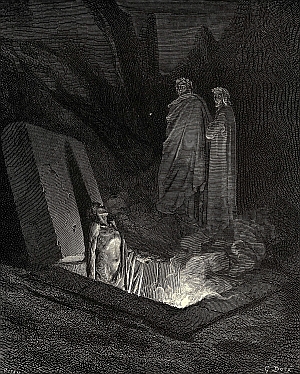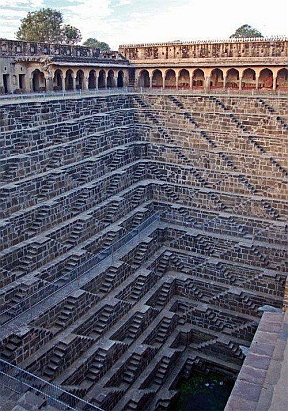
The faithful of Renceth* have long shuddered at tales of the arch-heretic Galen Polegoas, who had been a well-respected and holy cleric instrumental in several saintly actions against the forces of chaos. Galen’s had a well-deserved reputation for erudition, generosity, and piety. Unknown to most, however, was the fact that gnawing doubts troubled Galen. Galen’s faith in Renceth’s providence was weakening, especially in light of myriad little sufferings people sought his advice about.
In face of so much disappointment, Galen could no longer accept the doctrines that explain how Renceth provides the faithful with what they need, but that the faithful must be alert and discerning enough to recognize these provisions. Instead of proper orthodoxy, Galen perceived Renceth’s conditional providence as being akin to the Tronsosian** commandment to take what they need.
And so Galen consolidated his power base and from the safety of his fortress-cathedral began to preach that Renceth and Tronsos were one and the same. Galen taught that it was true that Renceth provided his faithful with opportunities for success and happiness, and that often those opportunities belonged to other people and were kept behind locked doors. Is not Renceth the God of Keys? Are not keys to be used to open locks? Can one be truly happy without the experience of beauty?
“Those who selfishly hoard what Renceth wills to be yours for your happiness seek to thwart Renceth’s will,” taught Galen. “Therefore, Renceth, Opener of Ways, authorizes you to take what he wills to be yours. And, since it is yours not the other’s, taking it cannot be unlawful. No man can be condemned for taking what it is his by divine will, for protecting what is his by divine will.”
And so the forces of chaos gained a powerful ally, and Galen’s city plunged into violence. A council of bishops convened and demanded Galen appear before them to answer charges of heresy. Galen refused, denying the council had any true authority. Armies were gathered, and Renceth’s faithful marched on Galen’s city. The seige lasted for years. Great was the suffering, and many on both sides died. Eventually, right order prevailed. A loyal remnant within the city opened the gates, and the crusaders surged within, putting many heretics to the sword before Galen was captured.
As justice demanded, Galen was given a chance to defend his actions. He persisted in his errors, and the tribunal passed sentence. Galen was beheaded in the public square, and his body was burnt in a purifying fire. As required by canon law, the charred remains were placed on display as a stark reminder of heresy’s consequences. When the sun rose the day after Galen’s execution, his blackened bones had vanished.
Agents of Tronsos stole those bones, regarding them as sacred relics. These agents interred Galen’s bones in a secret location in a desolate region several miles outside the city. Thieves and murderers devoted to Tronsos guard the site to this day, jealously preventing trespassers from approaching Galen’s grave.
Any cleric of 5th-level or higher who manages to safely approach Galen’s grave and offers appropriate sacrifices of objets d’art (worth at least 3,000 gold pieces) can call forth Galen, who will rise from his grave veiled in fire. The visiting cleric may interrogate Galen, who will answer questions as if the cleric had cast Contact Other Plane. The visiting cleric decides the maximum number of questions and suffers any negative effects that would result.
*Renceth is the God of Prophecy, Friendship, and Keys. Renceth knows the future, but he does not freely share that knowledge. Instead, he puts into the paths of his faithful the people and the resources necessary to open the doors that will be encountered. Those who ignore Renceth’s gifts find their paths full of obstacles whereas the observant find their paths full of opportunities.
**Tronsos is the God of Thieves and Beauty. Tronsos doesn’t reward his faithful. Instead, his faithful take their rewards from those unable to keep them from being taken. Of all rewards, beauty is the most prized, and beauty must be possessed and hidden away, safe from covetous eyes.
Tags: place of power, Swords & Wizardry




